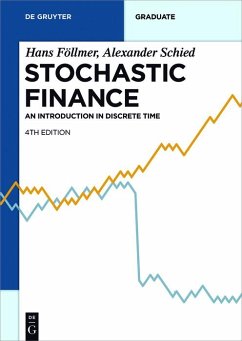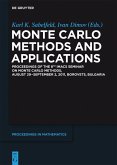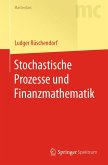This book is an introduction to financial mathematics. It is intended for graduate students in mathematics and for researchers working in academia and industry.
The focus on stochastic models in discrete time has two immediate benefits. First, the probabilistic machinery is simpler, and one can discuss right away some of the key problems in the theory of pricing and hedging of financial derivatives. Second, the paradigm of a complete financial market, where all derivatives admit a perfect hedge, becomes the exception rather than the rule. Thus, the need to confront the intrinsic risks arising from market incomleteness appears at a very early stage.
The first part of the book contains a study of a simple one-period model, which also serves as a building block for later developments. Topics include the characterization of arbitrage-free markets, preferences on asset profiles, an introduction to equilibrium analysis, and monetary measures of financial risk.
In the second part, the idea of dynamic hedging of contingent claims is developed in a multiperiod framework. Topics include martingale measures, pricing formulas for derivatives, American options, superhedging, and hedging strategies with minimal shortfall risk.
This fourth, newly revised edition contains more than one hundred exercises. It also includes material on risk measures and the related issue of model uncertainty, in particular a chapter on dynamic risk measures and sections on robust utility maximization and on efficient hedging with convex risk measures.
Contents:
Part I: Mathematical finance in one period
Arbitrage theory
Preferences
Optimality and equilibrium
Monetary measures of risk
Part II: Dynamic hedging
Dynamic arbitrage theory
American contingent claims
Superhedging
Efficient hedging
Hedging under constraints
Minimizing the hedging error
Dynamic risk measures
The focus on stochastic models in discrete time has two immediate benefits. First, the probabilistic machinery is simpler, and one can discuss right away some of the key problems in the theory of pricing and hedging of financial derivatives. Second, the paradigm of a complete financial market, where all derivatives admit a perfect hedge, becomes the exception rather than the rule. Thus, the need to confront the intrinsic risks arising from market incomleteness appears at a very early stage.
The first part of the book contains a study of a simple one-period model, which also serves as a building block for later developments. Topics include the characterization of arbitrage-free markets, preferences on asset profiles, an introduction to equilibrium analysis, and monetary measures of financial risk.
In the second part, the idea of dynamic hedging of contingent claims is developed in a multiperiod framework. Topics include martingale measures, pricing formulas for derivatives, American options, superhedging, and hedging strategies with minimal shortfall risk.
This fourth, newly revised edition contains more than one hundred exercises. It also includes material on risk measures and the related issue of model uncertainty, in particular a chapter on dynamic risk measures and sections on robust utility maximization and on efficient hedging with convex risk measures.
Contents:
Part I: Mathematical finance in one period
Arbitrage theory
Preferences
Optimality and equilibrium
Monetary measures of risk
Part II: Dynamic hedging
Dynamic arbitrage theory
American contingent claims
Superhedging
Efficient hedging
Hedging under constraints
Minimizing the hedging error
Dynamic risk measures
Dieser Download kann aus rechtlichen Gründen nur mit Rechnungsadresse in A, B, BG, CY, CZ, D, DK, EW, E, FIN, F, GR, HR, H, IRL, I, LT, L, LR, M, NL, PL, P, R, S, SLO, SK ausgeliefert werden.
"This book provides a fairly complete treatment of the most important probabilistic aspects of financial mathematics (or stochastic finance). [...] It is a worthwhile addition to the literature and will serve as highly recommended reading for students in the subject area for some years to come." Mathematical Reviews (review of the first edition)
"Since the appearance of the first edition in 2002, this book has become a classic in mathematical finance and has served in numerous courses as a basic textbook and as a basic source and introduction to the field for graduate students and researchers. [...] Altogether this is an extraordinarily well-done book concerning the subjects chosen, with a clear and readable description of its aims and material and a precise and explicit mathematical presentation. [...] This third edition has benefited from some new focus and material and is an enjoyable read and a most relevant textbook." Mathematical Reviews (review of the third edition)
"Since the appearance of the first edition in 2002, this book has become a classic in mathematical finance and has served in numerous courses as a basic textbook and as a basic source and introduction to the field for graduate students and researchers. [...] Altogether this is an extraordinarily well-done book concerning the subjects chosen, with a clear and readable description of its aims and material and a precise and explicit mathematical presentation. [...] This third edition has benefited from some new focus and material and is an enjoyable read and a most relevant textbook." Mathematical Reviews (review of the third edition)









